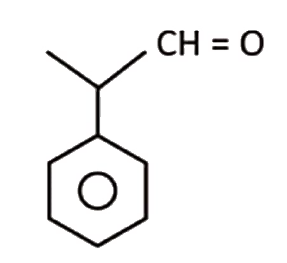HC≡CHExcessNaNH2−−−−→AC2H5Cl−−−−→B find the B.
C2H5≡C−C2H5
HC≡C−C2H5
H2C=CH−C2H5
ClHC=CHC2H5
The correct Answer is:A
To solve the given problem, we need to follow the reaction steps involving the alkyne HC≡CH (ethyne) and the reagents NaNH₂ and C₂H₅Cl (ethyl chloride). Let's break it down step by step.
Step 1: Reaction with NaNH₂
1. Identify the acidic hydrogen: The alkyne HC≡CH has acidic hydrogen atoms due to the sp-hybridized carbon atoms.
2. Deprotonation: When NaNH₂ (sodium amide) is added in excess, it acts as a strong base and abstracts the acidic hydrogen from the alkyne. This results in the formation of a carbanion.
HC≡CH+NaNH₂→HC≡C−Na++NH₃
Here, we form the sodium acetylide (HC≡C⁻Na⁺).
Step 2: Formation of A
3. Formation of the carbanion: Since NaNH₂ is in excess, it can deprotonate both hydrogen atoms from the alkyne, leading to the formation of a more stable carbanion:
HC≡C−Na++NaNH₂→HC≡C−Na++NH₃
This gives us the intermediate A, which is the sodium salt of the acetylide ion.
Step 3: Reaction with C₂H₅Cl
4. Nucleophilic substitution: The carbanion (HC≡C⁻) is a strong nucleophile and will attack the electrophilic carbon in C₂H₅Cl (ethyl chloride). The chlorine atom is a good leaving group.
HC≡C−+C₂H₅Cl→HC≡C−C₂H₅+NaCl
Here, the nucleophile attacks the carbon attached to the chlorine, leading to the formation of a new carbon-carbon bond.
Step 4: Formation of B
5. Final product: The final product B is butyne (C₄H₆), which can be represented as:
HC≡C−C₂H₅
This can also be written as:
C₂H₅C≡C−H
Thus, the final product B is 1-butyne or 2-butyne depending on the orientation of the ethyl group.
Conclusion
The final product B is:
B: C₂H₅C≡C−H (1-butyne or 2-butyne)
---
1. Identify the acidic hydrogen: The alkyne HC≡CH has acidic hydrogen atoms due to the sp-hybridized carbon atoms.
2. Deprotonation: When NaNH₂ (sodium amide) is added in excess, it acts as a strong base and abstracts the acidic hydrogen from the alkyne. This results in the formation of a carbanion.
HC≡CH+NaNH₂→HC≡C−Na++NH₃
Here, we form the sodium acetylide (HC≡C⁻Na⁺).
3. Formation of the carbanion: Since NaNH₂ is in excess, it can deprotonate both hydrogen atoms from the alkyne, leading to the formation of a more stable carbanion:
HC≡C−Na++NaNH₂→HC≡C−Na++NH₃
This gives us the intermediate A, which is the sodium salt of the acetylide ion.
4. Nucleophilic substitution: The carbanion (HC≡C⁻) is a strong nucleophile and will attack the electrophilic carbon in C₂H₅Cl (ethyl chloride). The chlorine atom is a good leaving group.
HC≡C−+C₂H₅Cl→HC≡C−C₂H₅+NaCl
Here, the nucleophile attacks the carbon attached to the chlorine, leading to the formation of a new carbon-carbon bond.
5. Final product: The final product B is butyne (C₄H₆), which can be represented as:
HC≡C−C₂H₅
This can also be written as:
C₂H₅C≡C−H
Thus, the final product B is 1-butyne or 2-butyne depending on the orientation of the ethyl group.
The final product B is:
B: C₂H₅C≡C−H (1-butyne or 2-butyne)
Topper's Solved these Questions
- HYDROCARBONS Book:NARAYNAChapter:HYDROCARBONS Exercise:EXERCISE - 1 (C.W) (BENZENE) (STRUCTURE & AROMATICITY)
Explore 2 Videos
- HYDROCARBONS Book:NARAYNAChapter:HYDROCARBONS Exercise:EXERCISE - 1 (C.W) (PREPARATION & PROPERTIES)
Explore 5 Videos
- HYDROCARBONS Book:NARAYNAChapter:HYDROCARBONS Exercise:EXERCISE - 1 (C.W) (ALKYNES) (NOMENCLATURE & METHODS OF PREPARATION)
Explore 3 Videos
- GENERAL ORGANIC CHEMISTRYBook:NARAYNAChapter:GENERAL ORGANIC CHEMISTRYExercise:Matrix-Match type questions
Explore 7 Videos
- HYDROGEN & ITS COMPOUCDSBook:NARAYNAChapter:HYDROGEN & ITS COMPOUCDSExercise:Interger type questions
Explore 10 Videos
Similar Questions
Knowledge Check
CH≡ChExcess NaNH2−−−−−−−−−→AC2H5Cl−−−−→B, find the B.
AC2H5−C≡C−C2H5BHC≡C−C2H5CH2C=CH−C2H5DCiHC=CHC2H5In the given reaction sequence
C6H5CHOH2N−OH−−−−−−→H⊕,ΔAP2O5−−→B
A and B respectively are:AC6H5−CH=N−OH,C6H5CNBC6H5−CH=N−OH,C6H5O∣∣C−NH2CC6H5−CH=N−OH,C6H5CHODC6H5−CH=N−OH,C6H5−COOHPPCl5,0∘C−−−−−→Q(i)NaNH2(excess)−−−−−−−−−−−−−−→−2HCl(ii)H+RNaNH2−−−−→SI−CH3−−−−→T− P is
A B
B C
C D
D
Identify A and B
C2H5OHNa−−→AC2H5Br−−−−→B.
View SolutionGive the formulae of [A] and [B]
CH3MgBr+CO2(i)Dry ether−−−−−−−−→(ii)H+/H2O[A]PCl5−−→[B]
View SolutionCH3CH2BrMg/Et2O−−−−−→ACO2−−→H2O+−−−→B, Porduct B is
View SolutionCH3CH=CH2B3H6−−→THFABr2−−→B
The product B of the reaction is
View SolutionPh−O||C−PhPhCO3H−−−−−→ALiAlH4−−−→B+C
B and C are respectively :
View Solution


